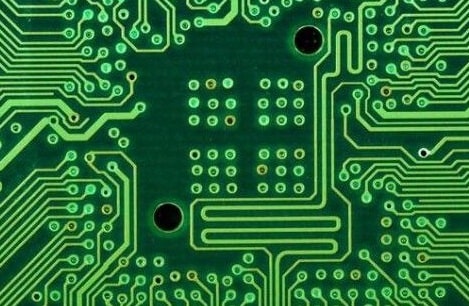Printed circuit boards are the building block of most modern electronic devices. They are created to provide mechanical and electrical support for the components.
Compared to traditional circuits, printed circuit boards have many advantages. For instance, they are small and light, making them suitable for many modern devices. In addition, the low cost of production makes them cost-effective.
In this article, we will discuss everything you need to know about printed circuit boards in electronics.
What is a Printed Circuit Board or PCB?
PCB or Printed circuit board is an electronic assembly that uses conductors, mainly copper, to make electrical connections between mechanisms. It offers mechanical support for electric components to attach a gadget to an enclosure.
PCBs have two main functions. One is to attach electronic components in selected places on the outer layers through soldering. The other function offers reliable electrical connections between the component’s terminals.
Since they are cost-effective, they are used in various sectors such as medical electronics, the military industry, the aerospace industry, and industrial and commercial electronics. Moreover, PCB products are not just automated but can also help the standardized assembly of several components.
What is the Main Printed Circuit Board?
Some years back, electronics were assembled from small integrated circuits. But today, copper connections are deposited directly on protecting substrates to form electrical connections. The copper connections on the deposited board is known as the main printed circuit board.
PCBs are mainly used in desktops computers and laptops. The main printed circuit board is where all components are located. Apart from PCs, PCBs are used in various electronic devices such as tablets, digital cameras, TVs, and cell phones.
How are Printed Circuit Boards Made?
Printed Circuit boards are typically made with copper. It is silver-plated to a substrate and fixed in a particular board design.
In addition, the PCB manufacturers focus on making PCBs small, durable, and include electrical power. Hence, there are various PCBs such as Rigid PCBs, Flex PCBs, Double-sided PCBs, Single-Sided PCBs, Rigid-Flex PCBs, and Multilayer PCBs.
Types of Printed Circuit board
Generally, Printed Circuit boards are the heart of modern electrical products. However, they are not created equally. There are several types of printed circuit boards made from a wide range of materials.
Since the 1900s, Printed circuit boards have evolved to meet quality, performance demands, and precision for modern technology.
Here is a list of the most common types of printed circuit boards.
*Single-sided Printed Circuit Boards – the single-sided printed circuit board has one base material layer. On one end of the substrate it is coated with a layer of copper because it is an excellent electrical conductor.
Single-sided PCBs consist of several circuits and electronic mechanisms but only on one side. This board works well for simple electronics. Also, they tend to cost less than others.
*Double-sided Printed Circuit Boards – The double-sided board looks like a single-sided board. However, the components are attached on both surfaces. The surface has traces that carry signals between components.
Hence, the board connects the circuit on every side using the through-hole and surface mount techniques.
The through-hole technique involves feeding small wires known as leads through the holes. But surface mount does not utilize wires. The leads are soldered straight onto the board.
*Rigid Printed Circuit Boards – the rigid PCBs are boards made-up and assembled on tough material. The panels use solid but rigid substrate material such as fiberglass that prevents the circuit board from twisting.
*Multi-layer Printed Circuit Boards – these are printed circuit boards with conductors on the internal layers for carrying electrical signals between the components. They may be single-sided or double-sided.
Designers can make thick and highly compound designs since there are many layers in the multi-layer printed circuit board.
*Rigid-Flex Printed Circuit Boards – this substrate is a flexible plastic in a flexible board. Due to the material used, the board can easily fit into rigid boards.
*Flex Printed Circuit Boards – flex PCBs do not use rigid material. They are made of flexible polyimide materials.
Other types of PCBs include metal-core PCBs and Ceramic PCBs. The metal-core PCBs use metal to provide greater rigidity. But the ceramic PCBs need high thermal conductivity. You may also find High Density Interconnect PCB and High Frequency PCB.
Why is PCB green?
Although most PCBs are green, it does not mean they have to be green. However, they are green because of the solder mask. It safeguards the copper circuits on the fiberglass to avoid short circuits.
Apart from green, the other colors used are blue, red, black, and white. PCBs with colors other than green colors are for standard products. But the most common PCBs are green.
Conclusion
Printed Circuits Boards have become very common in modern electronics. This is because they enable professionals all over the sectors to improve the performance of their electrical devices. Happily, there are various types of Printed Circuit Boards to consider.
Thanks for reading about “all about printed circuit board in electronics.”
